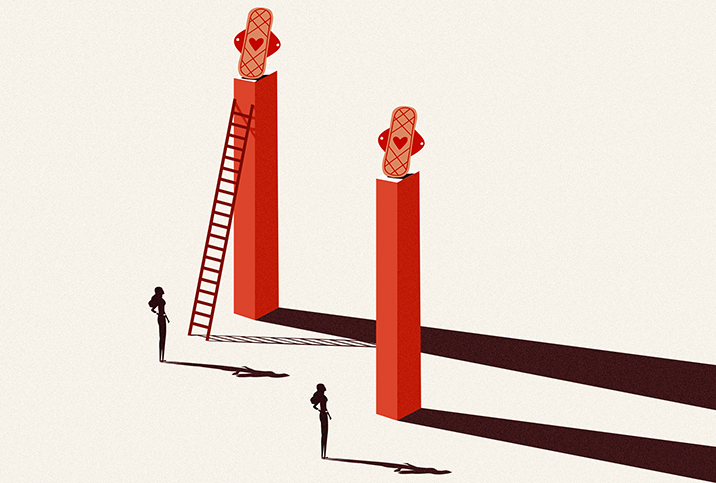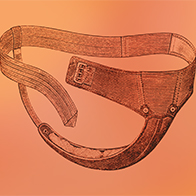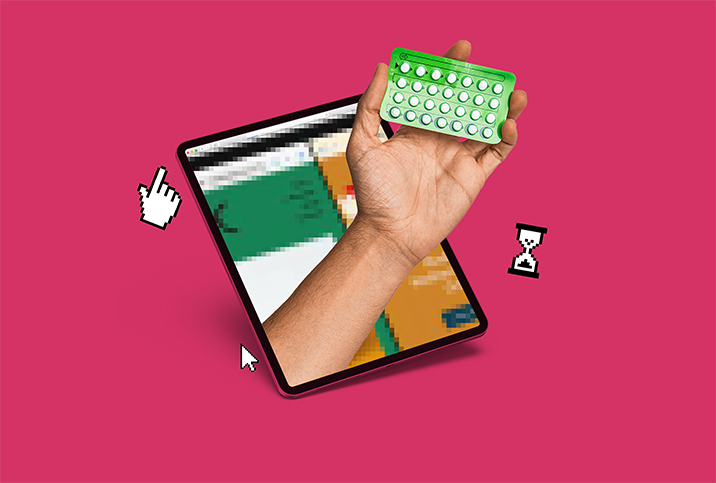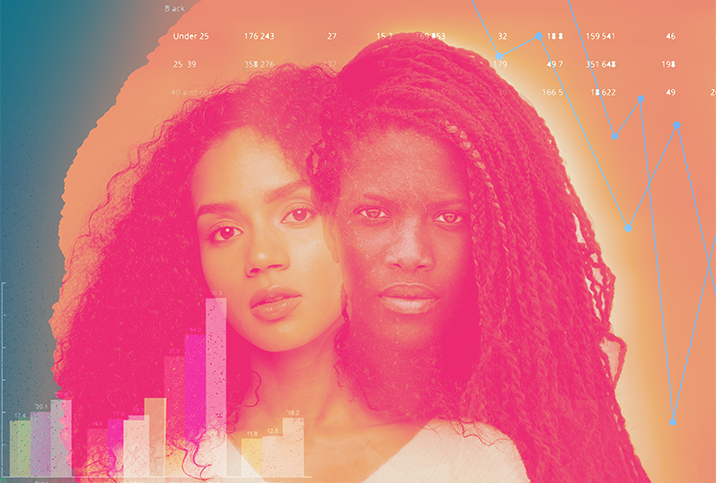We Need to Talk About Period Poverty in America

Period poverty is defined as inadequate access to menstrual hygiene tools and education, including but not limited to sanitary products, washing facilities and waste management, according to the American Medical Women's Association. In the United States, this healthcare challenge is often hidden in plain sight.
According to a 2021 survey of 1,036 menstruating Americans conducted by U by Kotex, 50 percent of the respondents believe period poverty is more of an issue internationally than domestically. While it is a global health issue, impacting a minimum of 500 million people worldwide as estimated by the organization Days for Girls, it's extremely prevalent in high-income countries.
Just how pervasive is period poverty in America? According to the survey, more than 2 in 5 people with periods—over 40 percent—say they have struggled to buy menstruation items due to a lack of income at some point in their life. Period poverty leaves many people with the choice of purchasing groceries and other "necessities" over menstrual supplies.
The definition of period poverty is slightly more nuanced than not having adequate supplies to take care of your menstrual cycle, although that's certainly part of it. The lack of access to supplies, alongside hygiene facilities, waste management and education, can cause physical, mental and emotional challenges, according to a February 2022 article in the Journal of Global Health Reports. The article notes that embarrassment and fear of embarrassment because of stigma play an integral role.
Who is affected by period poverty?
"Period poverty affects marginalized communities, such as people living in poverty and those working low-wage jobs, and certainly people who are homeless, students who attend Title 1-eligible schools, refugee and immigrant populations, as well as Indigenous communities," said Jennifer Gaines, program director of the New Haven, Connecticut-based Alliance for Period Supplies, a network of independently operated nonprofit organizations.
The U by Kotex survey shows that Black and Hispanic menstruators face menstrual poverty at disproportionate rates, with 23 percent of Black and 24 percent of Hispanic people strongly agreeing that they struggled to afford period supplies in the past year, compared with 8 percent of white respondents.
These are a basic necessity that many low-income women lack, with nearly half of women unable to buy both food and menstrual hygiene tools in the previous year, according to a 2019 study of low-income women in St. Louis published in the journal Obstetrics & Gynecology.
How the pandemic worsened period poverty
In 2019, women were 35 percent more likely to live below the poverty line than men, according to the National Women's Law Center's December 2020 poverty fact sheet. The COVID-19 pandemic only exacerbated gender-based economic inequities. Throughout the pandemic, low-income women lost their jobs at disproportionate rates to men. Women lost a net of 5.4 million jobs during the recession, nearly 1 million more job losses than men, as reported by the Center for American Progress, an independent nonpartisan policy institute.
Between 2018 and 2021, the number of people who reported they struggled to buy menstruation supplies increased by 35 percent, according to the U by Kotex survey. Twenty-seven percent of people who have periods said the pandemic made it more challenging to afford the supplies.
There has been an unprecedented increase in demand through the Alliance for Period Supplies network, Gaines said. Similar increases have been seen at other organizations, including the Period Collective, said Ida Melbye, executive director of the Chicago-based nonprofit group that provides feminine hygiene tools to homeless and low-income women.
"Now with inflation rising, people are struggling even more so to afford period products and increasingly must make difficult purchasing choices between basic necessities or rent or food," Gaines explained.
A far-reaching impact
When people don't have access to the menstruation supplies they need, they may miss work, school and other obligations. One-third of the Kotex survey participants indicated they had to miss commitments for this reason.
"Period poverty hurts everyone," said Lysne Tait, executive director of Helping Women Period, an East Lansing, Michigan, nonprofit organization that provides menstrual health supplies to homeless and low-income people.
"If someone doesn't go to school or work, they aren't contributing to the economy or they are lessening their opportunities," Tait said.
Further, loss of work widens the already stark gender-based economic divide.
Missing school each time you have a period has lifelong implications, Melbye explained.
"We see that menstruators can fall significantly behind their nonmenstruating counterparts," Melbye said. "Many individuals are not able to go to work if they can't afford period products, thereby risking lost income and/or losing their job. In addition, it is very challenging to focus on your job or during a job interview, a test or the SATs if you do not have adequate protection and you are worried about bleeding through your clothes."
People unable to access menstruation necessities—such as tampons, sanitary napkins and menstrual cups—may stretch out the use of their supplies or fasten makeshift ones out of socks, napkins, paper towels or diapers. Extending the use of these items can have severe health consequences, such as increasing the risk of toxic shock syndrome (TSS). The Kotex survey reported that using substitute products increased 75 percent in 2021.
Period poverty is a fixable problem
Addressing this human rights issue calls for a multipronged approach that includes destigmatizing menstruation and discussing its existence with policymakers to implement real change in healthcare inequality.
Making menstrual hygiene tools free and accessible in all schools is a helpful start. Seventeen states and Washington, D.C., have passed legislation to ensure students who menstruate have free access to menstruation supplies while in school, according to the Alliance for Period Supplies. However, each bill is unique. Only four states have funded their mandates, Gaines explained.
Additionally, you cannot buy these items with government resources such as SNAP (Supplemental Nutrition Assistance Program) and WIC (Special Supplemental Nutrition Program for Women, Infants and Children), which some states, including Illinois and New York, are starting to change.
Further, when products are considered basic necessities, they are exempt from tax. However, tampons are considered "luxury items." Some states have begun repealing the tax on menstrual items, but the majority have not: Twenty-seven states still tax period products as luxury items.
Removing the tampon tax, allowing individuals to purchase menstruation supplies with SNAP and other government benefits, and making them available in schools and government buildings are all helpful pieces, Melbye said.
"Ultimately, we would love to see menstrual products be available in all bathrooms and as common as toilet paper," she added.
"Distributing pads and tampons is only solving the symptom, not the source," Tait said. "What we need to eliminate period poverty is to destigmatize periods and destigmatize poverty. We need to institute a livable wage for everyone."
Only 4 percent of Kotex survey respondents said they knew of a local resource that provides necessities such as tampons and sanitary pads at a reduced cost or no cost. Embarrassment and shame were two common emotions expressed by those who couldn't afford period products. These feelings are also enmeshed in stigma surrounding the menstrual cycle. Reducing that stigma is critical to fixing the problem.
"Period poverty is a huge public health issue that can be solved," Gaines said.




















